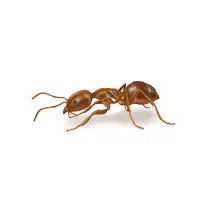Argentine Ants

argentine ant indentification
Although their bodily characteristics, such as size and color, are the primary method of identifying Argentine ants, habitat and colony formation can also help with identification. As their name suggests, Argentine ants originated from Northern Argentina and first made their way to the United States in the late 19th Century, when they were likely unloaded on freight vessels in New Orleans. Nowadays, they are prevalent in Southern California, however they may also be found in states along the Gulf Coast.
Argentine ants develop colonies outdoors, preferring to build shallow nests beneath stones, boards as well as other items that may offer protection. Sub colonies is probably found in stacks of lumber, bricks or debris; in landscaping mulch or other landscaping features; behind brick and stone veneer; within and underneath insulation; and in wall voids or in any other suitable void.
Why are Argentine ants bad?
Argentine ants can cause a number of issues. They may enter homes through crevices and voids, and they are capable of producing rapidly growing colonies that swiftly become large. Commonly, when they do go into homes, it is usually looking for food and water.
Yet another intriguing characteristic of Argentine ants is that they can protect populations of insects, like mealybugs, scales and aphids, that could damage plants. Due to the fact Argentine ants feast upon the honeydew produced by these insects, they may offer them protection, even relocating them to better habitats where they’re able to thrive, continuing to make the food the ants require to survive.
Are Argentine Ants Harmful?
Fortunately, Argentine ants usually do not sting or bite human beings, and they are generally mostly just a nuisance whenever they are discovered in homes.
In reality, Argentine ants pose a greater threat to other insects because they’re an intrusive species. Not only can they chase away other local varieties of ants, they also can even adversely affect populations of pollinators and vertebrates.
How To Get Rid of Argentine Ants
Argentine ant infestations can quickly get worse and they can be hard to eliminate. If you live in places where these ants are typical, try these tips that can help safeguard your home and property:
- Eliminating piles of lumber, bricks or other debris that could serve as a nesting site for ants.
- Maintaining landscape mulch no more than two ins thick and at least 12 inches from the foundations.
- Ensuring the landscape sprinkler system will not spray directly onto the foundation.
- Securing as many cracks in the building’s exterior as possible.
- Maintaining tree and shrub branches trimmed down to prevent them from coming in contact with the building.
.